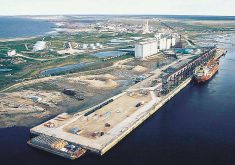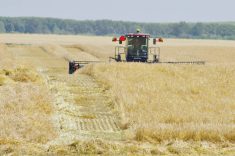Delegates on a recent Soy Canada expedition to Japan, Malaysia and Vietnam returned with positive news for Canadian soybean growers. Each nation reaffirmed its preference for Canadian soybeans and expressed willingness to continue purchasing the crop.
Some 26 representatives of Canada’s soybean industry made the trip last month, along with individuals from Agriculture and Agri-Food Canada, Transport Canada, the Canadian Grain Commission and Soy Canada.
According to a Feb. 23 press release, customers heard about Canadian growers’ production sustainability, projections for the 2023 growing season, the global soybean market, Canada’s traceability program, research initiatives and other topics.
Read Also

Journal pulls long-cited glyphosate study for ethics violations
The journal Regulatory Toxicology and Pharmacology has retracted a 2000 Monsanto-linked glyphosate review, drawing new scrutiny as Bayer faces mounting legal pressure.
International shipping, domestic logistical issues and other factors have affected Canada’s ability to supply soybeans to large and growing foreign markets.
As detailed by Soy Canada delegates, the Indo-Pacific visit was intended to support stable access to food and feed soybean markets, as well as endorse free trade of the commodity. The first in-person meeting between visiting Canadians and buyers in the three Asian countries since 2019, it was also an opportunity to discuss wider trade challenges and constraints.
“Asian markets are very much about relationship building and having direct connection points,” said Nicole Mackellar, market development manager for Soy Canada.
Buyers reiterated their need for consistency in the supply chain, while the delegation communicated how the industry is trying to resolve lingering supply issues such as shipping container shortfalls and logistical challenges.
Mackellar said transportation improvements include more container availability and faster transit times. Things are still far from pre-pandemic levels, however.
Brian Innes, executive director of Soy Canada, also said congestion is easing, but the concentration of global shipping into just three trade alliances continues to frustrate those who sell Canadian commodities.
“Shipping is getting more normal in price and more predictable than it has been. As Canadians, though, we continue to see real challenges with the level of service offered by a very concentrated international shipping community,” said Innes, adding the United States government has been particularly effective at holding shippers accountable for better service.
“In Canada we have not had that same pressure, and we’re also a smaller market for both imports and exports. There’s been virtually no action by the Canadian government …
“What I heard from customers was the emphasis on the importance of predictability; predictability of systems within Canada, that’s our railway and ports, and on the shipping side. But at no time did I understand from them that it was a particular concern for Canadian exports,” he said.
As shipping issues evolve, Mackellar says the sector has placed more emphasis on forward contracting in an effort to communicate expected export volumes.
Market constraints
Each country highlighted different buyer needs and market trends. In Japan, high quality and protein in identity preserved (IP) soybeans were noted as particularly important for food products.
In Malaysia, participants heard about the country’s rising middle class and its demand for soy food products.
In Vietnam, soybean crushing capacity is set to double in the next two years to meet growing demand for food and feed. However, Canadian soybean exports have faced significant market access challenges in Vietnam over the past five years.
Vietnam is a particularly “price sensitive” country, said Mackellar, and often opts for unclean shipments because they are cheaper. But Canada does not send unclean grain shipments due to the potential presence of creeping thistle, so the price of Canadian soybeans is higher. Consequently, Vietnamese buyers look to other sellers.
“The program provided an opportunity to talk with customers about how we can improve trade between our two countries. There’s a lot of interest in Vietnam,” Mackellar said.
Regardless of challenges discussed, Mackellar and Innes said the trip provided many reasons for optimism. Current market opportunities already outstrip what Canadian growers can supply, and with other countries’ growth in wealth, changes in eating habits and other socio-economic factors forthcoming, greater opportunity is anticipated.
For Scott Persall, an Ontario farmer and one of the grower delegates, repeated emphasis on the quality of Canadian soybeans was both stark and heartening.
“I was really impressed all three countries talked about the high quality of soybeans for Canada,” he said. “One of the challenges we heard from seemingly all countries was IP soybean price increase. At their end, they were concerned about high energy, labour, and raw materials. Those are the challenges here … in Canada as well.”
This article first appeared in Farmtario.















